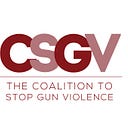California’s New Suicide Prevention Law Must Focus on Guns
On the first day of Suicide Prevention Month, Governor Jerry Brown signed Assembly Bill 89, which requires applicants for licensure with the California Board of Psychology to undergo six hours of suicide prevention training. This new law is an important and well-intentioned suicide prevention initiative. In order to truly make an impact, however, the required trainings must include guidance on counseling suicidal patients about guns.
About 20,000 Americans die by firearm suicide each year — half of all suicide deaths. This is not because firearms are the most commonly used method in suicide attempts — they are not. It is because those who use guns rarely survive. Firearms are among the most lethal methods of suicide, and research shows that their availability during a suicidal crisis is often the difference between life and death.
As mental health professionals are well aware, these life-or-death decisions often occur within minutes. In one study of near-lethal suicide attempt survivors, nearly 75 percent said they deliberated for one hour or less before making their attempt. A gun makes an impulsive, irreversible choice far too easy. Limiting access to guns during fleeting, high-risk moments can save lives.
Psychologists can help prevent firearm suicide by determining if suicidal patients have access to guns and working with them to temporarily reduce access until the risk of suicide decreases. This process is an example of “lethal means safety counseling.” Unfortunately, most healthcare professionals are not adequately trained in this area and rarely counsel their patients about firearm safety. With California’s new training requirement, psychologists have an opportunity to become more comfortable and more effective at discussing firearms access and helping to limit access to guns during crisis.
It is a common misconception — even among some healthcare professionals — that if a gun is not available, an individual in crisis will “find another way.” But this is not the case; if a person’s preferred method of suicide is not available, most do not substitute another method. Even when they do, other methods are less fatal. In short, the absence of guns increases the chances of survival. Asking about guns is a preventative first step.
San Francisco is taking a similar preventative measure by constructing a suicide prevention net beneath the Golden Gate Bridge. What might seem like an overly simplistic solution to a complex problem — physically making it more difficult to attempt suicide — has proven effective in other cities. Most people who survive a suicide attempt are glad they survived, and nine out of 10 survivors do not go on to die by suicide. Barriers to suicide allow people to get the help they need.
Psychologists should be commended for helping vulnerable individuals. They make difficult decisions every day and are constantly assessing suicide risk. California’s new training requirement should supplement what these professionals already know by focusing on specific topics — like firearms access. If these trainings are going to make an impact, guns and lethal means safety counseling must play a major role.
Vicka Chaplin, MA, MPH is a public health analyst at CSGV and EFSGV. She has a background in mental health counseling and over a decade of experience in violence prevention and mental health promotion.
